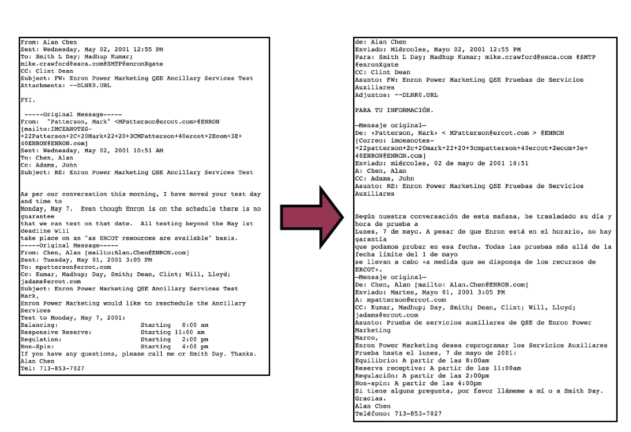Forbes recently published a great article about eDiscovery and translation called Managing The Translation Process To Make Multilingual E-Discovery Easier. In this article, the author discusses the enormous task of multi-language document review and how best to go about it. The author stated that overreliance on machine translation can be perilous (after all, can a robot detect nuance? Can a robot make a joke?), which is why it should augment discovery instead of supplanting it entirely.
Reveal Machine Translation
We at Datamine Discovery generally agree with this approach, which is why we use Reveal-Brainspace to enhance the process of discovery. With its solid machine translation and ability to search conversations by sentiment (with the artificial intelligence looking for things like pressure or rationalization), it’s clear that the robots’ understanding has exceeded expectations. Reveal can detect and translate 150 different languages, including the identification of up to three languages per document. This allows a linguist to change the language within the review interface so they can review documents in their native language. In eDiscovery, foreign languages are now just another window into the data.

However, it’s also clear that machines haven’t entirely replaced humans (yet), which is why we partnered with QuisLex, a document management review company that provides everything from linguists to translators to technologists, whatever subject matter experts are necessary to complete a project. These experts have the final say in document translation, are often certified in their area of expertise, and understand the issues caused by localization of language.
It’s important to know when to rely on technology and when to defer to human expertise. As stated by Attorney at Work, at the end of the day it comes down to quality, speed, and cost. What documents are being translated? Will they be the center of the case, or are they background information? It’s the human ability to make a judgment call (something that translations often require) that robots don’t possess. A machine can translate a document word for word, but a human can understand slang, sarcasm, and most importantly, nuance. If the documents require 100% accuracy, you’ll want a human reviewer. If these documents form the background of your discovery, machine translation can keep costs down and provide a large quantity of data at a much lower price. It’s all about what you’re trying to achieve.
Combine the best of both worlds
The most efficient approach is a hybrid, taking the best parts of both human and machine. By using both approaches, one can save money without sacrificing the quality of product.
Want to translate your documents?
Interested in translating your multilingual document review? Contact us today to learn more!
